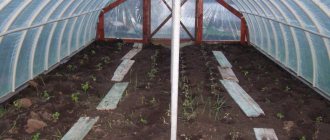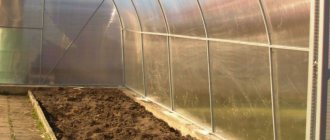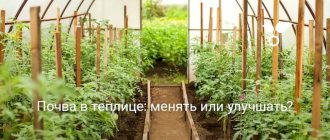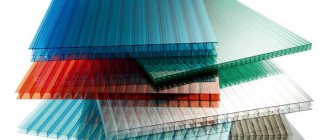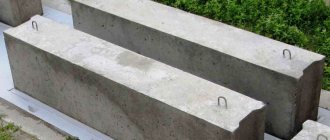To have less hassle in the spring when preparing the greenhouse for planting, devote more of your time to it now. All season long, not only cultivated plants grew in the greenhouse, but also “freeloaders” - pathogenic micro- and macroorganisms. Eggs, larvae, and spores of various pests and diseases, resistant to low temperatures, accumulate both on the walls of the greenhouse itself and in the upper soil layer. To get rid of them and possible problems in the spring, you should carry out autumn treatment of the soil and the walls of the greenhouse inside and out. Even novice gardeners can independently restore order in their film-plastic farming and prepare their greenhouses for the next season.
Ways to disinfect a greenhouse
Where to start? And you need to start by clearing the greenhouse of plant residues and related materials used in growing crops: pieces of film, ropes, stakes. You should not put all this inside or near the greenhouse, because... pathogens and pests may remain on them. It is recommended to take everything out and burn it.
After the work has been done, a whole range of recommended activities follows:
- washing the walls of the greenhouse with disinfectant solutions;
- disinfection of the greenhouse and soil with sulfur or tobacco bombs,
- replacing soil or deep digging of soil,
- soil freezing,
- chemical treatment,
- spilling biological products or herbal infusions,
- steaming the soil,
- sowing green manure.
By carrying out autumn preparation using one or more of these methods, you will ensure favorable conditions for your future harvest. With the onset of spring, it will be possible to begin planting work, spending much less time on preparation.
When to treat
It is necessary to start processing the greenhouse before the snow melts. At the first stage, it is snow that is required. It is brought into the greenhouse and the entire perimeter is covered. Pros of using snow:
- melt water moistens the soil and supplies it with important microelements;
- The ground, thanks to the snow, freezes, and the larvae overwintering in the upper layer are destroyed.
Advice! While the temperature outside is below freezing, to get rid of ice on polycarbonate, open the windows and doors. When the temperatures are equalized, the crust will easily come off without additional effort.
At the end of February or early March, the second stage of work begins to prepare the polycarbonate greenhouse for the new season. During this period, they plan to clean and disinfect the soil, as well as all structural elements and auxiliary equipment (shelves, benches, racks, fences for beds).
Rotten wooden parts are replaced with new ones, old ones are disinfected. Slaked lime is used for this. Metal parts with signs of corrosion:
- cleanse;
- subjected to careful treatment using special anti-rust agents;
- prime;
- apply paint to metal.
Most summer residents remove rust using improvised means: lemon juice mixed with vinegar, soda, raw potatoes.
Plant remains remain in the ground after the last season: roots, stems, remains of foliage. Everything needs to be collected and taken to the compost heap. Remove old bindings, twine, and pegs from the greenhouse. Burn everything that has become unusable and collect the ashes for spring and summer feeding.
Disinfection of greenhouse walls
Disinfection of all internal walls, greenhouse ceiling and soil, provided that your greenhouses have been used for many years. If the covering material was an annual polyethylene film, then it should simply be removed. If you have a glass or polycarbonate greenhouse, you need to start disinfecting the greenhouse.
How to wash the inside of a polycarbonate or glass greenhouse
It is most convenient to wash walls with a sponge or soft brush to avoid damage to the covering material. For washing, either ready-made disinfectant liquids or ordinary solutions prepared independently are used.
Solutions for washing greenhouse walls:
- a solution of regular baking soda (2 tablespoons dissolved in a bucket of water);
- a similar solution of mustard powder;
- soap-vinegar solution: dissolve about 100 g of household liquid in 10 liters of water (sometimes tar is used) and add no more than 1 tsp. vinegar essence;
- a regular soap solution is used provided there is no obvious infection during the period of use of the greenhouse.
After performing soap procedures, be sure to rinse off all detergents used. It would be advisable to thoroughly rinse the top of the greenhouse.
| BY THE WAY , often the most economical summer residents disassemble the greenhouse into its component parts, wash it and store it in a safe place until spring. |
Sulfur blocks for greenhouse disinfection
Often, to quickly achieve the goal of disinfecting a greenhouse, sulfur bombs are used. They should not be overused, and should only be used if a severe infection was detected in the greenhouse last season.
You can prepare sulfur bombs yourself from purchased sulfur (about 1 kg of sulfur per greenhouse with a volume of 10 m³). You can purchase ready-to-use checkers at any country store.
Tobacco bombs can serve as some alternative to sulfur bombs. However, they are less effective and are not dangerous for such harmful diseases as late blight. _____________________________________________________
A more environmentally friendly way is to use tobacco ___________________________________________
| Sulfur will perfectly fight against all kinds of mold, spider mites and various bacterial pathogens |
How to use
Preliminary digging of the soil will facilitate more thorough penetration of the drug to greater depths.
- The treatment period is 3-5 days with a completely closed greenhouse.
- Then you should carefully open and ventilate the greenhouse structure for 1-3 weeks.
- Be sure to wash all walls with soapy water.
The advantages of sulfur bombs -
- simultaneous disinfection of the greenhouse structure and the top soil layer to a depth of about 10 cm,
- as well as the penetration of sulfur smoke into crevices that are difficult to reach for other types of treatments.
Disadvantages of the method -
- possible death of not only pathogenic microflora, but also beneficial microorganisms;
- compliance with safety regulations.
Sulfur bombs can be used both in autumn and early spring
| IMPORTANT Be sure to read the included instructions before using the checker. |
Precautionary measures
— You need to know that this method is best used in greenhouses with a wooden frame. Manufacturers of greenhouse structures made of polycarbonate do not recommend the use of sulfur bombs due to the possibility of reducing the light-penetrating properties of the material. However, experience shows that with a sufficient volume of such greenhouses, no change occurs.
— Caution should be used when fumigating small greenhouses. If you do spray a bomb in a small greenhouse, then do not leave it closed for a long time and ventilate it early.
— Use this method with caution if you have a non-galvanized metal frame due to possible corrosion.
How to clean polycarbonate honeycomb. Cleaning, washing, removing dirt from polycarbonate sheet
Cleaning / washing To increase the service life of structures made from SOTON polycarbonate sheets, it is recommended to periodically clean them using compatible household detergents. This will extend the life of the polymer material. Polycarbonate surfaces can be cleaned in the following ways: 1.1. Removal of static electricity followed by dust removal: 1.1.1. Ionizer treatment; 1.1.2. Treatment with antistatic agents; 1.2. Dust removal; 2.1. Cleaning with isopropyl alcohol; 2.2. Treatment with special cleaners. Cleaning lightly contaminated polycarbonate surfaces Treatment with an ionizer When air is ionized near the surface of polycarbonate sheets, the electrostatic charge is removed. After this, you can remove the dust with a vacuum cleaner or a slightly damp soft cotton cloth. The antistatic effect of the ionizer is not constant. It is neutralized by rubbing or touching the sheet. Treatment with antistatic substances Antistatic substances are alcohol or aqueous solutions that form a thin antistatic film on the surface of a polycarbonate sheet. They are applied by spraying or wiping the surface with a cloth soaked in an antistatic solution. They are effective immediately after the solvent evaporates, when the coating turns into a thin conductive layer. The use of antistatic cleaners gives good results. They eliminate the accumulation of electrostatic charges on the surface of the plastic and at the same time efficiently clean the surface from dust. Polycarbonate sheets can be cleaned with a 100% cotton cloth and large quantities of mild, neutral, non-abrasive detergent and water (mild dishwashing detergent may be used). Compositions containing ammonia, caustic alkali, and chlorine should be avoided, as they destroy polycarbonate.
Disinfection of soil in a greenhouse
There are several of the most well-known and accessible methods of soil disinfection
Soil replacement
It is recommended to do this at least once every 4 years. For some it will be accessible, but for others it will be too difficult. It all depends on the availability of physical labor, because, in my opinion, this is not so easy to do, since nothing more or less needs to be replaced, and the layer is about 10 cm deep. The harvested soil can be placed in open garden beds. The removed soil should be replaced either purchased or prepared in a new location.
Deep digging
If it is impossible to replace the soil in the greenhouse, the simplest thing would be:
- do a deep dig and reseed the soil through a fine and medium sieve, choosing plant debris, insects and their larvae.
Pests and pathogens accumulated in the soil layer in loose soil will become more accessible to the effects of disinfecting chemicals, low temperatures during freezing in winter, or when the soil is scalded with boiling water. After preparing the soil, you can apply organic fertilizers.
Chemical method
This is the most accessible in terms of labor intensity, but is more expensive and requires compliance with special requirements and standards. This method involves the use of chemicals designed to combat harmful pathogens.
Copper sulfate
- Copper sulfate is most often used in a concentration of 50 g per bucket of water.
- During initial treatment, it is recommended to use a more concentrated solution, increasing the rate of vitriol by 2-5 times.
For a faster and better effect, Bordeaux mixture or ordinary quicklime . Many summer residents use ready-made preparations, of which there are plenty in stores: karbofos , carbation , etc.
The main thing here is not to overdo it. Be sure to protect yourself and your loved ones, especially children, from the harmful effects of chemical liquids or powders. Dilute the drug according to the instructions, pour the soil from a watering can, and then dig it up.
| IMPORTANT Remember that each drug has the ability to accumulate in the soil. Strictly follow the rules and deadlines for application! |
Cryogenic method
Perhaps the simplest and most accessible. It involves freezing in low winter temperatures. In winter, it is advisable to leave greenhouses open. Sometimes manufacturers indicate the impossibility of keeping doors and windows open for a long time in order to avoid temperature changes. However, this process cannot be left to chance, because under various unfavorable conditions: strong winds, snowstorms, there is a high probability of the structure overturning.
There is a practice of throwing snow into closed-top greenhouses. The result here is twofold:
- A large layer of snow will prevent the soil from freezing and the death of harmful pathogens.
- However, melting snow in the spring will help moisten the greenhouse soil with useful melt moisture, freeing you from additional watering.
Biological method
Biological products
Solutions of natural origin can serve as a good replacement for chemicals, leading to healthier soil, increased reproduction of beneficial microflora, promoting active decay of plant residues and enriching the soil with humus. These include ready-made biological preparations: Fitosporin , Baikal EM - 1 , Baktofit , Trichodermin , etc.
Despite their higher cost, they are convenient to use and cause less harm to beneficial microorganisms. These drugs are effective at positive temperatures of at least 10 °C.
Herbal infusions
Experienced gardeners often use infusions of phytoncidal plants as solutions that are destructive to any harmful soil life:
- marigolds,
- wormwood,
- garlic,
- calendula,
- tobacco
Sowing green manure
To disinfect greenhouse soil and improve its composition and structure in the fall, they resort to sowing green manure.
Various crops are used for sowing:
- mustard,
- Vika,
- soybean,
- oats, etc.
Growing green manure crops enriches the soil with nitrogen and cleanses it of pathogenic microflora.
| After sowing green manure crops, treatment with chemicals and fumigation with sulfur bombs must not be carried out! |
Thermal method
It involves pouring hot water onto the greenhouse soil.
- It is advisable to dig it up first for deeper penetration of boiling water.
- Usually they are shed at least 3 times, after which the entire watered surface is covered with film to maintain the elevated temperature for a longer period of time.
The method is simple, but it is difficult to determine whether it brings more benefit or harm. Indeed, under the influence of high temperatures, the beneficial microflora is almost completely destroyed. I think this technique is more appropriate for small areas.


